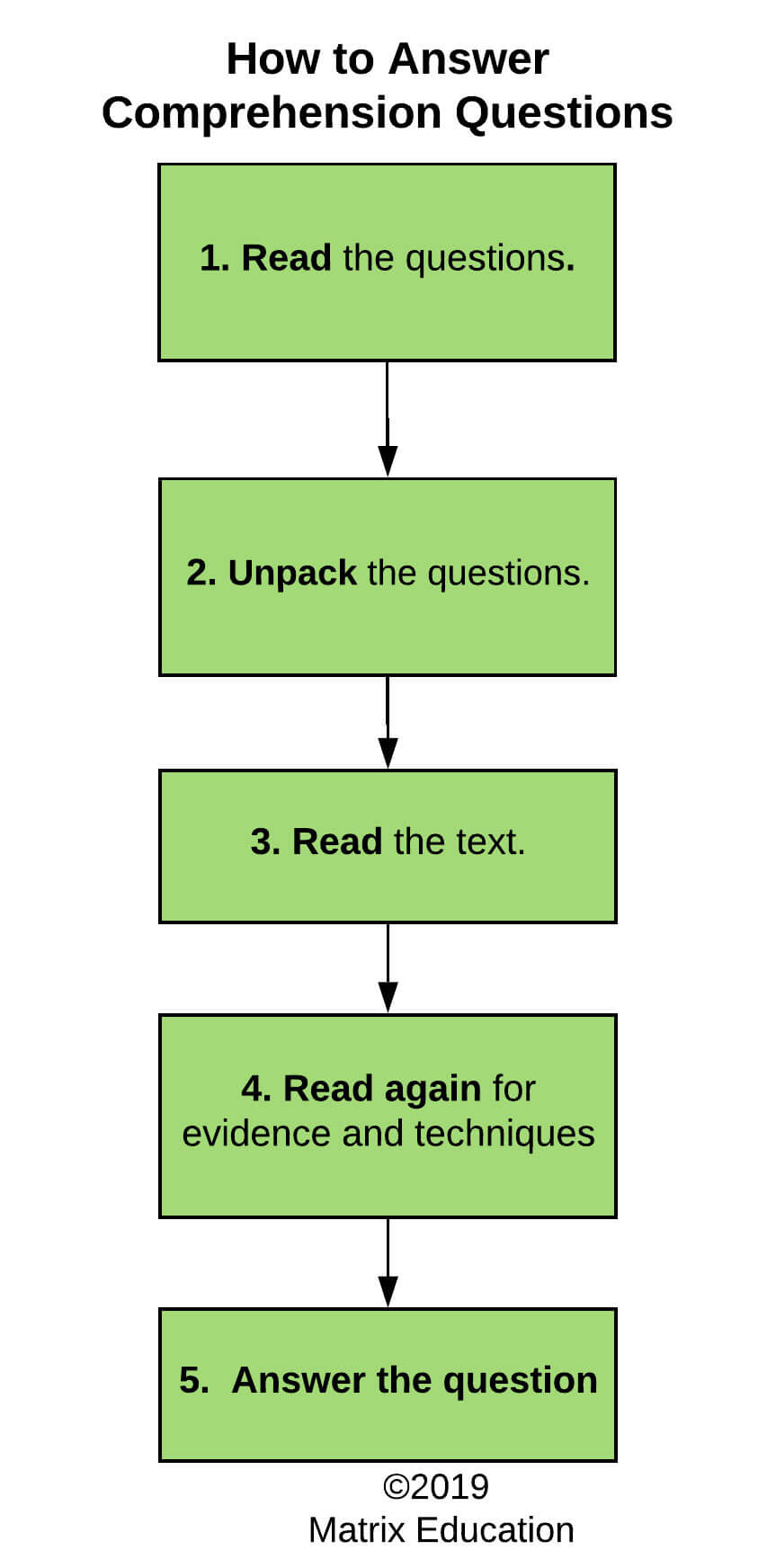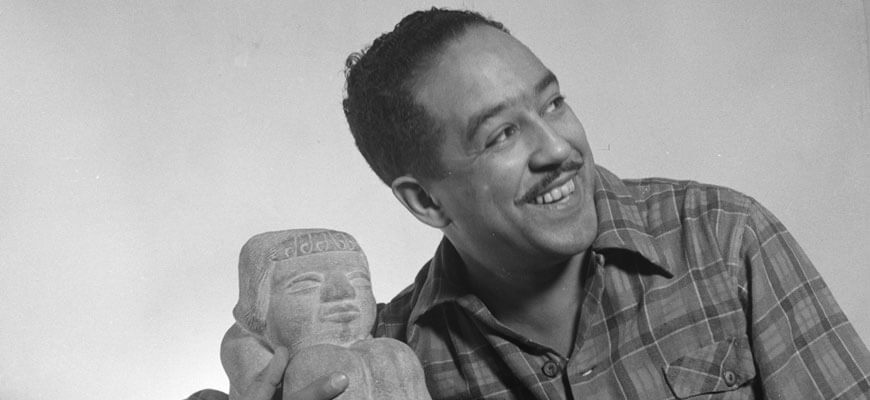Year 7 English
Year 7 English tutoring at Matrix will help your child improve their reading and writing skills.
Learning methods available
Select a year to see available courses

Do you fret when you hear the dreaded phrase: “comprehension section?” Well, Matrix is here to skill you up! Over the last 19 years, we’ve learned a thing or two about how to answer comprehension questions and, in this article, we’re going to share that with you now.
Like anything to do with studying English, there’s a process for approaching and answering comprehension questions. And it’s the same for year 7 & 8 students as it is for Year 12 students sitting HSC English Paper 1.
So, if you learn it and get it down now, you’ll be acing things calmly when it really counts!
In this article, we’re going to show you how to ace your next comprehension assessment. We’ll look at the following:
So, to get started, let’s look at what a comprehension section looks like.
A comprehension section is where you are given a feature article, an extract from a novel or short story, or a poem that you haven’t seen before. You need to read the text and then answer a series of questions on it.
Some questions will be multiple choice, others will be written. The questions will be worth different marks and will require different length answers.
Remember how in Part 3 of this Guide we discussed comprehension and how well you interpreted information from a text?
Well, a comprehension section tests those skills. The questions are designed to see how well you have read and processed (called parsing) the information and ideas in the text.
Obviously, comprehension questions assess how well you have comprehended a text. But they also assess how well you can turn your findings into responses and arguments.
Throughout your study of English in high school, you’ll need to demonstrate your ability to read texts and produce critical responses to them. The comprehension questions you answer in Years 7 & 8 are introducing you to that.
As you likely know, when you are in Years 7 and 9, you’ll have to answer comprehension questions for NAPLAN.
Clearly, comprehension skills are really important. So, let’s show you how to attack comprehension sections.

To teach you how to answer comprehension questions, we will first walk you through the process and then we’ll work through an example with you.
The process we’ll look at is:

It may seem backwards to read the questions first. But it actually isn’t.
Reading the questions first tells you what you need to look for in the unseen text you’ve been given.

Make sure you read the questions a couple of times so that you know what to look for.
Questions will come in several varieties:
You should learn to identify these different types of questions by familiarising yourselves with the format and, also, learning the key verbs used in these questions.
Once you’ve memorised the picture, make a mental note of the information you need to find.
Now you know what you need to answer, you are ready to read the text they are about.
When you read the text, you need to be mindful of the time. You don’t want to rush it, but you also don’t want to skim read.
You want to be aware of the amount of time you to read the text. If you have enough reading time, you should read the text twice after you’ve read the questions.
As you read, you need to read to:
If you have the time to read the text more than once, aim to read the text the first time to understand it.
Then, read the text the second time to find what the question is asking you for.
While you are reading you need to look for the information the questions are asking for.
As you already know what you need to answer, this will make your job easier.
Depending on the things that you are asked, you should pay attention to the following while you read:
If you can’t make notes during the reading time, you need to remember the parts of the text that contain the useful information you need.
If you can make notes, try to make some dot point notes with the relevant information.
What we’re going to do now is look at how to answer different types of comprehension questions: multiple choice or short answer responses.
Let’s start with multiple choice.
If you have a multiple choice format, you are going to want to choose the most appropriate answer from the list.
Make sure that you read the question thoroughly and look for:
Don’t rush the question, take the time to make sure that you are answering correctly.
Don’t be afraid to reread the pertinent part of the passage before you respond.

When you are answering written responses there are some structural steps you need to take in your response.
They are:
Let’s take a gander at these in more detail.
1. Identify and restate the keywords in the questions
All questions will have important verbs and nouns in them that tell you what you need to do and what you need to discuss.
Identify the verbs in the question. Note what they are asking you to do.
Identify the key nouns and noun-phrases in the question.
You’ll begin your response by restating or, ideally, paraphrasing these questions.
2. Restate the keywords and present your answer
Next, you need to present your answer to the question. In the step above, you incorporated the language of the question to frame (or introduce) your response.
Now you need to present your response clearly and succinctly. To do this we’re going to use a T.E.E. structure.
If you’re unsure of what a T.E.E. statement is, read this post.

3. Incorporate your evidence
Some questions will require you to cite evidence in your response.
When you need to include an example in your responses, you should ensure that you incorporate it into the grammar of your sentence.
Let’s look at what this means with an example.
Let’s use Atticus Finch’s statement that “I wanted you to see what real courage is, instead of getting the idea that courage is a man with a gun in his hand” from Harper Lee’s To Kill a Mockingbird (1960) as our evidence.
In this example, Atticus is using a metaphor – “courage is a man with a gun in his hand” – to explain to his son that courage is often non-violent and doesn’t involve weapons. He distinguishes between “real courage” and the kind of courage represented by “a man with a gun in his hand.”
If we need to discuss Harper Lee’s use of metaphor, we’d state:
To describe courage to his Jem, Atticus uses the metaphor of courage as “a man with a gun in his hand” to personify what courage is not.
You’ll note that in the above response, we’ve incorporated the technique and example from the T.E.E statement.
Now we need to explain it.
4. Explain your example
The length of your explanation will depend on how many marks the question is worth.
When you explain your example, you need to explain how you think the example, and its technique, support your response to the question you’ve been asked.
A good rule of thumb is to aim for 1-2 sentences per mark. Obviously, if you need to write an extended response, you’ll be writing something much longer that requires more examples.
Let’s look at a sample question and response to make things clear for you.
Question:
How does Atticus try and explain courage to his son, Jem? (2 Marks)
Answer:
When Atticus is explaining courage to Jem, he states that he “wanted you to see what real courage is, instead of getting the idea that courage is a man with a gun in his hand.” In this statement, Atticus uses contrast and metaphor to show Jem that “real courage” is not “a man with a gun in his hand.”
5. Conclude your example
If you have a comprehension question worth 3 or more marks, you may want to include a statement that sums up and concludes your argument.
When writing a concluding statement make sure that you address the key points of the question by including the keywords or synonyms in your response.
If you want to test your comprehension skills and see how your new skills work, try our practice comprehension Test!
Develop your English techniques and skills and boost your confidence with our Year 7 English Courses!
Now you know what to do, let’s go through a sample text and questions.
So you can really grasp how to answer comprehension questions, let’s look at a sample text and questions:
Hold fast to dreams
For if dreams die
Life is a broken-winged bird
That cannot fly.
Hold fast to dreams
For when dreams go
Life is a barren field
Frozen with snow.

1. According to the poem, if you don’t hold onto your dreams ________ (1 mark)
2. How does Langston Hughes use metaphor to convey the importance of dreams? (3 marks)
Take a few moments and read the questions two or three times.
Let’s see what the questions are asking you to discuss:
Read the poem through once to get a sense of what it is about.
We can see that the narrator (known as the persona) is telling the reader that we need to have dreams and we need to have them as aims or our life will lose meaning.

Now we need to reread the poem with an eye to the questions and the information we need to answer them.
Take a moment to read the poem again.
Let’s see what the key information is for each question:
Now we have all the information, we are ready to answer the questions. Let’s start with the multiple choice question.
Question 1: According to the poem, if you don’t hold onto your dreams ________ (1 mark)
A good approach is to work through a process of elimination. Let’s do that:
Now let’s look at question 2, the short response comprehension question.

Question 2: How does Langston Hughes use simile to convey the importance of dreams? (3 marks)
We have already identified the metaphors in Hughes’ poem and what they are conveying.
Now we need to write a response. Remember that the process for writing a T.E.E comprehension response is:
Let’s put this into action:
1. The keywords are – how, use, simile, convey, “the importance of dreams”
2. To restate this in our response we would write that:
Hughes uses a pair of metaphors to represent the importance of dreams.
This is the Technique of our T.E.E. response.
3. Now we need to expand on this and develop it answer by incorporating our evidence.
Remember this is worth three marks, so we should probably use a couple of pieces of evidence to back up our answer.
Don’t forget that we need to try and incorporate the quotation, or quotations, into our full sentences.
Hughes relates to us that if we forget or fail to nourish our dreams, life becomes “a broken-winged bird / That cannot fly” and “a barren field / Frozen with snow.”
This is the Example part of our T.E.E. structure.
4. We’re ready to present our explanation and explain what we think Hughes means.
These metaphors capture the importance of dreams to the meaning we find in our lives.
This is the Effect part of our T.E.E. structure.
5. Finally, we need to add a concluding statement to hammer our analysis home.
In his poem, Hughes is saying that without dreams to drive us, life becomes empty and devoid purpose.
Let’s put it all together.
Hughes uses a pair of metaphors to represent the importance of dreams. Hughes relates to us that if we forget or fail to nourish our dreams, life becomes “a broken-winged bird / That cannot fly” and “a barren field / Frozen with snow.” These metaphors capture the importance of dreams to the meaning we find in our lives. In his poem, Hughes is saying that without dreams to drive us, life becomes empty and devoid purpose.
Now, while this is a good response that would get full marks, it is a little long-winded.
As you practice your writing you want to learn to be a bit more concise. We could make this response more concise by rewriting it as:
Hughes uses a pair of metaphors to relate to us that if we forget or fail to nourish our dreams, life becomes “a broken-winged bird / That cannot fly” and “a barren field / Frozen with snow.” These metaphors represent Hughes’ belief that without dreams to drive us life becomes empty and devoid purpose, capturing the importance of dreams to the meaning we find in our lives.

Comprehension sections pit you against the clock. This means that to do well, you need to be as efficient as possible.
So, what can you do to beat the clock?
Let’s have a look.
You will always be given more reading time than you should need. Use it to its utmost by reading the questions first, and then reading the texts.
If you have time to read your text again, read the questions again and then look specifically for the answers.
When your writing time begins, take a few minutes to plan your written responses. This isn’t the waste of time it sounds like.
If you plan what evidence you will use in your answers and how you will use it, you won’t encounter writer’s block when responding.
In addition, you will have the opportunity to reevaluate your initial ideas as you write your responses.
Students often ask, “how long should my response be?” This is the wrong question.
Students should ask, “How much time should I spend on each question?”
The best way to figure this out is to divide the total number of marks on offer by the total writing time of your exam.
For example, if you have a forty-minute test with ten minutes reading time that is worth fifteen marks, then you should spend 2 minutes per question.
Why? You only have thirty minutes to write. 15 marks for a 30-minute exam means that you 2 minutes per mark (\(30 \over 2 = 15\))
If you’re worried about running out of time, be strategic.
What does this mean? If you have a question worth 5 marks and three questions worth 1 mark, you really need to get that 5 mark question answered. If you run out of time on a 1 mark question, you only lose a mark. But if you don’t start the 5 mark questions or only partly answer it you will lose more marks.

Finally, you need to be erudite and concise. When answering comprehension short answer question, don’t waffle. Get to the point as quickly as you can.
If you have a question worth 2 marks, don’t use three examples and write a paragraph. Write a couple of sentences using 1 or 2 sentences.
Don’t say something in 5 words if you can say it in 2.
Don’t write: The composer, Hughes, tries to show the audience why we need to look after and nourish our dreams.
Do write: Hughes explores why we should nourish and follow our dreams.
There is no golden bullet for improving your responses to comprehension questions. You have to practice the skills involved:
The best way to do this is to take as many practice comprehension papers as you can get your hands on.
© Matrix Education and www.matrix.edu.au, 2023. Unauthorised use and/or duplication of this material without express and written permission from this site’s author and/or owner is strictly prohibited. Excerpts and links may be used, provided that full and clear credit is given to Matrix Education and www.matrix.edu.au with appropriate and specific direction to the original content.